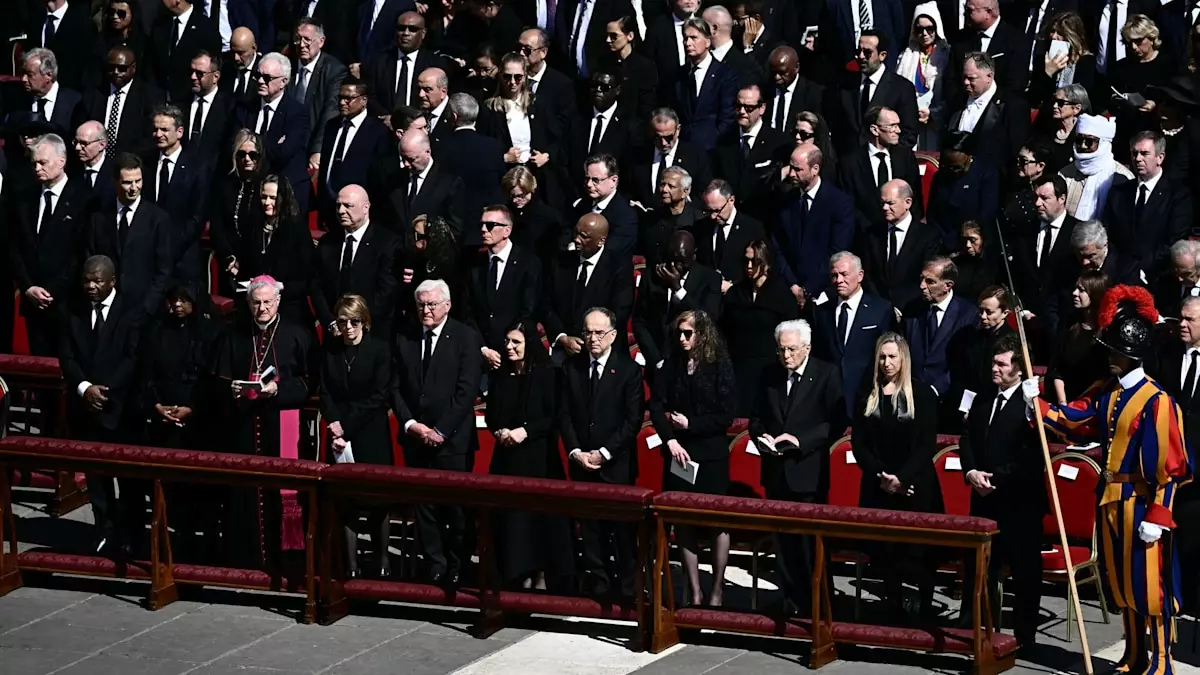The recent funeral of Pope Francis stirred a lot of conversation, particularly about the seating arrangements that puzzled many royal watchers and political analysts alike. Despite the somber context of the event, the seating plans sparked debates more than the ceremonial grandeur itself. Prince William’s positioning—several rows behind other world leaders—didn’t just reflect his royal status, but highlighted how complex diplomatic protocols can be, especially when intertwined with international relations and tradition. Funerals often serve as a stage where historical allegiances and contemporary politics are put on display, and in this case, the seating chart became a narrative in itself.
The Intricacies of Alphabetical Arrangement
The Vatican employed an interesting tactic by arranging attendees in alphabetical order by their countries, but they did so in French—utilizing the language of diplomacy that has shaped international relations for centuries. This decision was deliberate and nuanced, creating both order and a subtle shake-up of hierarchical expectations. For insiders familiar with the intricacies of royal protocol, this may have been less shocking, but for onlookers, it presented a confused tableau of global importance and rank.
The impact of such a seemingly trivial decision is crucial as it speaks volumes about the Church’s understanding of political egos and international stature. It serves as a reminder that, yes, even in death, diplomatic protocols remain priority. Notably, the mention of Cardinal Vincent Nichols—who candidly acknowledged the monumental task behind organizing such a delicate event—only underscores the expert handling of what could have devolved into a hierarchy-related debacle.
Striking a Balance: Symbolism vs. Reality
While the layout may appear contradictory in terms of importance accorded to leaders like Trump—who found himself seated at the forefront—and Prince William, the decision to place the English royal at a distance serves a deeper purpose. The selections made by the Vatican apparatchiks were strategic, intended to engender a sense of unity, rather than exclusivity. Reportedly, the seating arrangements were designed to manage “big egos,” thus flipping conventional wisdom on its head.
His placement, behind leaders such as Queen Mary of Denmark—who sat closer to the altar—underscores the importance of symbolism in international interactions. Prince William represented not just himself or the British monarchy, but also signified the Church of England’s connection to the Roman Catholic Church. His role speaks to an evolving narrative of shared spiritual leadership amidst evident religious divides.
The Missing Element: A Reflection on Attendance
Interestingly, the absence of Princess Catherine at the funeral raised eyebrows even amidst the ongoing decorum. Speculations about family commitments aside, her lack of presence illuminates the shifting dynamics of royal engagements. Traditionally, royal partnerships often present a united front at significant events. Whether this absence is reflective of a conscious decision to evolve royal representations or is merely situational remains to be seen. In either case, it leaves space for discussion on what a modern royal family looks like within these traditional frameworks.
Prince William’s attendance alone gestures towards a substantial commitment to uphold the legacy and respect of his father, King Charles III, and to the late pontiff whose influence transcended borders. It resonates with the understanding that each royal engagement—or lack thereof—makes nuanced statements about priorities in family, royal duties, and evolving personal relationships with different faiths and traditions.
The Vatican’s Diplomatic Mastery
Ultimately, the seating arrangements for Pope Francis’ funeral are a compelling study in how sensitive diplomacy can navigate through high-profile scenarios while managing a variety of egos. Cardinal Nichols rightly pointed out that the Vatican has been honing this skill since the time of the emperors. By showcasing an ability to handle international relations delicately through strategic seating, the Holy See affirmed its long-established place as a central player in global conversations. The nuanced dance of relationships reflected in seating charts not only showcases the art of diplomacy but also sets a precedent for how international leaders will engage in the future.
In a world where global relationships can pivot at the slightest shift, such occasions reframe our understanding of power dynamics—especially as they play out in the public eye. As we unpack such events, one can’t help but appreciate this intricate blend of respect, tradition, and calculated managing of perceptions inherent in royal and state functions.

